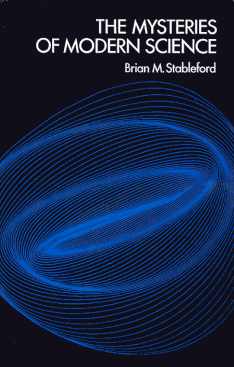| Home |
| Novels |
| Collections |
| Translations |
| Non-Fiction |
| Short Stories |
| Anthologies |

The author of many science fiction novels (including Halcyon Drift, Man in a Cage and The Mind Riders), Brian Stableford deals in this book with science fact, and studies the historical changes which have overtaken scientific thought during the last hundred years. He investigates how and why these changes have come about. and explores some of the historical and philosophical consequences of the changes.
Written in a way that makes it accessible to the non-scientific layman, the book explores new ways of looking at the history and content of the sciences, using perspectives derived from the sociology of science. It points out that, during the past century, the scientist's model of the universe has become gradually more peculiar. It has been discovered that neither the atomic microcosm nor the universal macrocosm operates according to the common-sense principles which enable us to make sense of the world we perceive directly. In order that we may attain any understanding at all of the fine structure of matter or the gross properties of the cosmos, we must acknowledge the limitations of our commonsense notions and be prepared to put them aside.
The author goes on to consider the limitations that are placed on the extent and nature of the knowledge we may obtain by virtue of both our limited means of acquiring it and the limitations of the universe's own inbuilt information-transfer mechanisms. He demonstrates that aesthetic considerations and historical circumstances have affected the nature of scientific thought and speculation, especially in relation to the mathematical modelling of physical phenomena and the Darwinian model of evolutionary process. Finally, he discusses the way in which scientific knowledge affects and directs society through the medium of technology, and the relationship between scientific knowledge and faith.
Published in 1977 by Routledge
& Kegan Paul Ltd
ISBN: 0-7100-8697-0

